Fixing walings
Each waling must be connected to the sheet pile wall (main wall) in such a way that the forces that occur can be transferred without any problems. In order to simplify erection and to accommodate vertical forces, the walings are supported on suitably designed, welded brackets. These brackets are generally made from sawn or torch-cut plate, but other forms are possible.
Where the working space beneath a waling is limited, a support suspended from the sheet pile is possible. The suspended supports are welded to the waling or connected to the washer plates for the waling bolts. Nevertheless, a suspended support still requires a short erection angle to be welded to the sheet pile wall below the waling.
An internal waling (tension waling) must be especially carefully connected to the sheet pile wall.
Sturdy waling bolts ( min. 1 1/2 inch) are necessary for transferring the horizontal forces to the waling and also for aligning the wall. Likewise, distributing forces due to a ship impact on a quay wall and allowing for the risk of corrosion call for generous dimensioning. Waling bolts must be sufficiently long if they are to be suitable for aligning the wall. We distinguish between bolts with an upset hexagonal head and studs with a thread at each end.
Waling bolts are positioned between the webs of the waling sections and transfer their loads via washer plates. we distinguish between the front plate in the trough of the sheet pile (which in the case of HOESCH piles are made in two parts because of the interlock in the middle of the flange of the pile) and the rear plate on the waling. For transferring longitudinal forces, the flanges of the walings can be bolted or welded to the back of the sheet pile wall ( in contact with soil). However, cleats welded to the waling and braced against the webs of the sheet piles represents an alternative solution. On anchor walls, the connection is generally made to a waling behind a the wall ( compression waling). Waling fixings are not required for structural reasons; it is sufficient to support the waling on brackets.
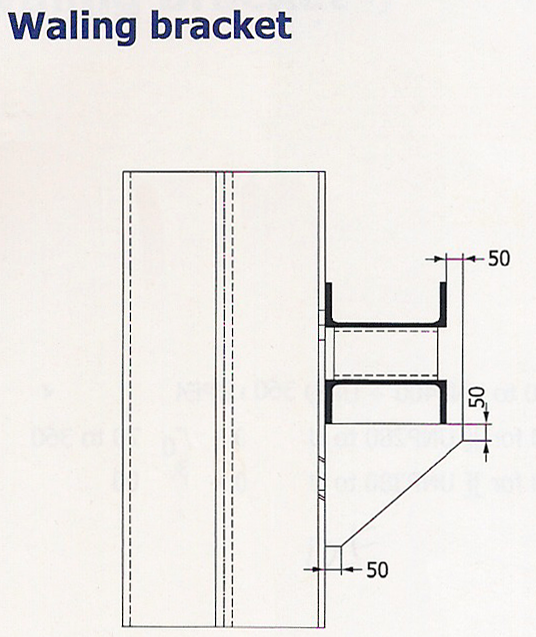
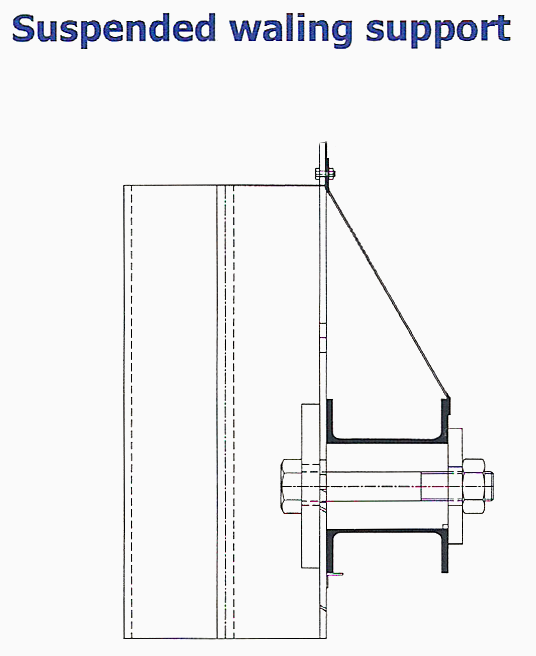
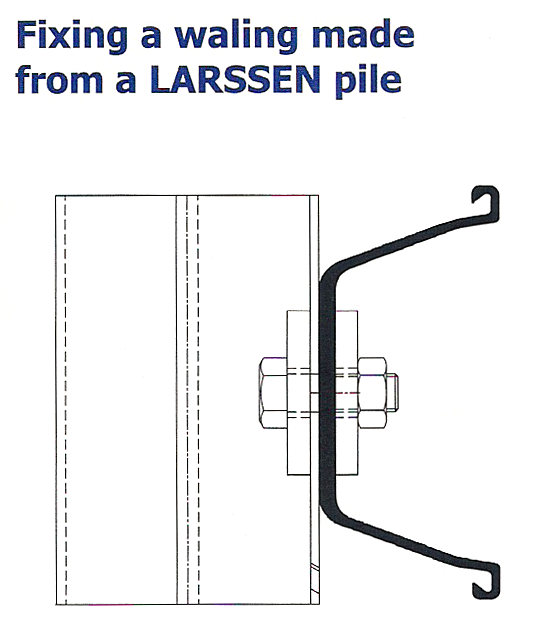
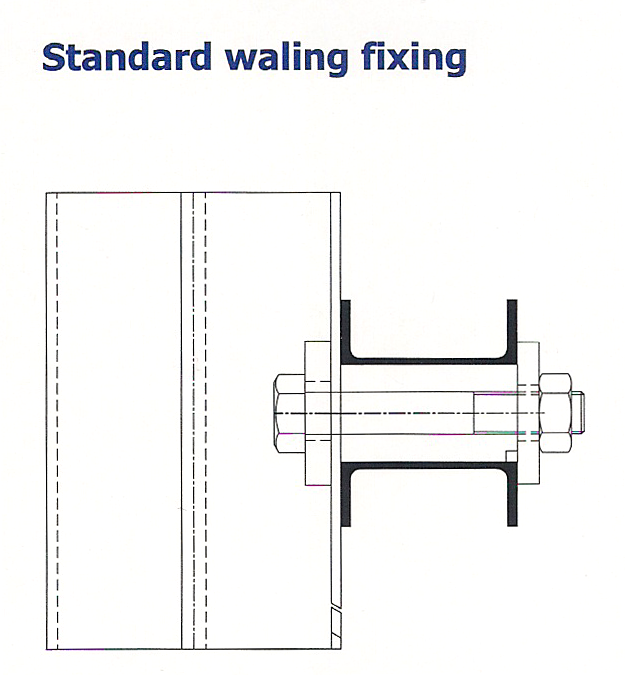
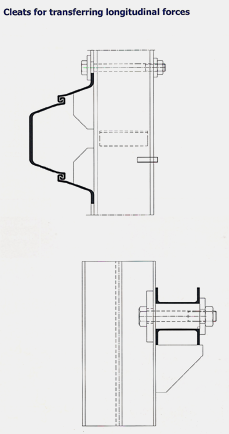
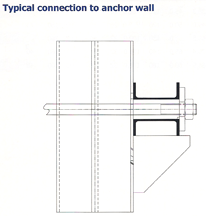
Where the working space beneath a waling is limited, a support suspended from the sheet pile is possible. The suspended supports are welded to the waling or connected to the washer plates for the waling bolts. Nevertheless, a suspended support still requires a short erection angle to be welded to the sheet pile wall below the waling.
An internal waling (tension waling) must be especially carefully connected to the sheet pile wall.
Sturdy waling bolts ( min. 1 1/2 inch) are necessary for transferring the horizontal forces to the waling and also for aligning the wall. Likewise, distributing forces due to a ship impact on a quay wall and allowing for the risk of corrosion call for generous dimensioning. Waling bolts must be sufficiently long if they are to be suitable for aligning the wall. We distinguish between bolts with an upset hexagonal head and studs with a thread at each end.
Waling bolts are positioned between the webs of the waling sections and transfer their loads via washer plates. we distinguish between the front plate in the trough of the sheet pile (which in the case of HOESCH piles are made in two parts because of the interlock in the middle of the flange of the pile) and the rear plate on the waling. For transferring longitudinal forces, the flanges of the walings can be bolted or welded to the back of the sheet pile wall ( in contact with soil). However, cleats welded to the waling and braced against the webs of the sheet piles represents an alternative solution. On anchor walls, the connection is generally made to a waling behind a the wall ( compression waling). Waling fixings are not required for structural reasons; it is sufficient to support the waling on brackets.










 Tālr:
Tālr:  E-mail:
E-mail: